LG’s back-to-back release of the Nexus 4 and Optimus G has placed it back among the top of flagship choices this quarter. As the fraternal twin of the Nexus 4, the Optimus G shares a lot of similarities with the former both in design and hardware specification. Check out our full review of the LG Optimus G after the break.

Announced back in September 2012, the device was initially released in Korea, Japan, Canada, and the U.S. The delayed released in other countries, including the Philippines might also be partly due to the high demand for the Nexus 4 which basically uses the same hardware and is being prioritized for Google’s benefit.
Design & Construction.
LG duplicated its design strategy for the Optimus G from the Nexus 4. Both the front and back panels are completely covered with Gorilla Glass but unlike the Nexus 4, the Optimus G has a more simple body and monoblock design.
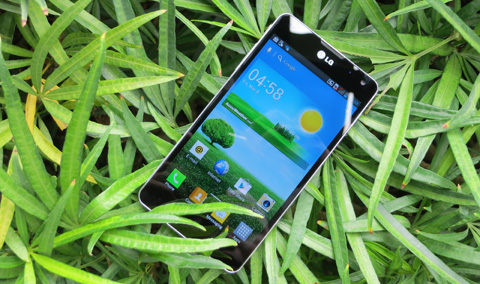
The device looks pretty solid, has a bit of a heft to it and very premium feel, thanks to the sandwiched glass panels. Compared to the Nexus 4, the Optimus G looks more elegant and classy.
There are no physical buttons up at the front with the Android soft keys hidden neatly into the bottom end of the bezel. The power button is placed on the right side, the volume rocker is on the left side along with the micro-SIM slot.

The 3.5mm headphone jack is positioned at the top along with the noise-canceling microphone. The micro-USB port for charging is at the bottom end. Unfortunately, there’s no microSD card slot available for storage expansion.
At the back is the 13-megapixel rear camera with an LED flash which slightly protrudes above the glass panel. The back side has a diamond pattern just beneath the Gorilla Glass and somewhat glitters at certain angle.

A simple, linear design and glass construction gives the Optimus G that classic and elegant look whether it’s with the all black or the white variants.
Display
LG’s been making their own IPS LCD display for a long time so it is not a big surprise that they will capitalize on their display technology and bring it to their handsets. The Optimus G comes with a 4.7-inch display but the Gorilla Glass 2 that protects it is actually larger since it runs from one end to the other end of the bezel.
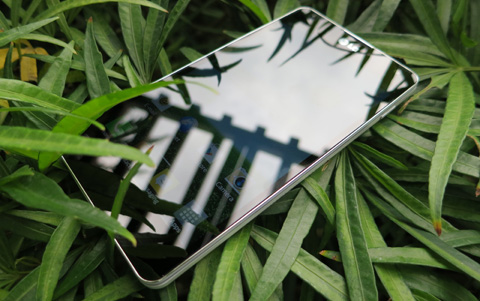
With a native resolution of 12680×768 pixels, the Optimus G has a pixel density of about 318ppi which is not the highest but is already pretty for its class. The True HD IPS+ LCD looks impressive on the screen — colors are cool and images are very clear and crisp. Photos and video render really good on the display and the screen can be very bright when cranked up to the highest settings.
LG’s Zero Gap technology allows the capacitive sensor to be inked/etched directly into the LCD glass giving better screen transparency and sensitivity. Casual users might not really appreciate this though since the effect is almost indistinguishable.
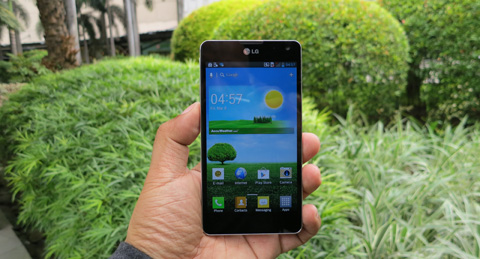
The Back, Home and Settings button are soft keys etched behind the glass panel at front and lights up when activated. The edges of the glass is protected along the sides with a thin metal frame which looks nice on either on the white or black variants.
OS, UI and Apps
The Optimus G comes with Android Jellybean right out of the box and as expected, has pretty smooth and snappy navigation. The Optimus 3.0 UI is very simple and clean, nothing fancy or flashy but looks very fresh and vibrant.

LG added a number of really nice and useful native widgets as well as a cool collection of wallpapers. The UI customization is very subtle and functional.
The Optimus G comes with a special feature called the QSlide. This allows you to run a number of native apps on top of existing apps or home screens. The QSlide supports videos, the native browser, memo, calendar and calculator. A maximum of 2 additional windows can float and operate on top of any existing window. You cna also resize the windows and even change the opacity at the same time. This means you can watch or stream a video at 50% opacity while browsing or checking Twitter.
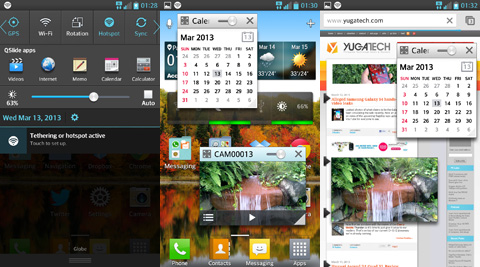
Access to hundreds of thousand sof apps and games are all available via the Google Play Store. LG also added their own pre-installed apps like Video Wizard, Polaris Office 4, etc. as well as an LG SmartWorld which has a collection of recommended apps dedicated to LG smartphones.
Multimedia and Camera.
With a large display and good audio, the Optimus G works very well with watching movies. Listening to songs is equally enjoyable as long as you don’t have the speakers covered by the palm of your hands or laid against a surface. It is mainly due to the placement of the speaker grills at the back side of the panel which is a similar dilemma with the Nexus 4.
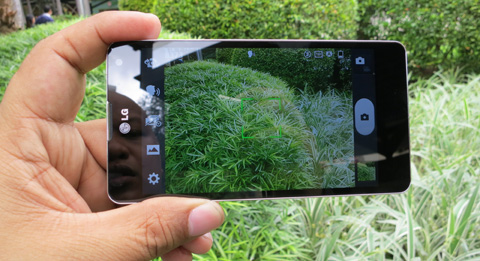
The 13-megapixel camera of the Optimus G is quite good. Under good lighting conditions, it can capture really nice, crisp and vivid photos. Under low-light conditions though, the camera struggles a bit on getting focus and noise on the images become more evident.
Here are sample photos we took using the camera:
One thing we also noticed is the glare that is produced in certain scenarios, just like the one photo above where we took a shot inside the lobby of Manila Hotel.
What we also liked about the camera is the short minimum focusing distance which allows us to take very close macro shots.
Here’s some sample video clips we took using the Optimus G:
You will notice the close up focus on the snow just outside the window of the airplane.
One of the other more interesting features of the handset is support for LTE. With it, we are able to achieve impressive mobile internet speeds in excess of 20Mbps. Here are some of the historical data we’ve gathered while connected to LTE.

Fortunately, most of the locations that I normally spend a lot of time (office in The Fort, home in Makati and condo in Pasay) are covered with LTE so I mostly rely on WiFi tethering even when playing Starcraft 2.
Video streaming becomes more tolerable, DropBox becomes more useful and the idea of handling large files thru the Cloud makes practical sense. LTE does change the way you use your mobile phone.
Performance and Benchmarks.
Overall performance of the Optimus G is very good and this is also evident with the scores with got from our synthetic benchmarks. The scores on all three tests we’ve done showed the Optimsu G as among the top handsets to have been released in the market.

Antutu Benchmark score went above the 18k mark (18,085) while Quadrant gave it a score of 6,152. Nenamark 2 tests showed a maximum 59.8fps on 3D. All of the scores in our test results are significantly higher than the one we got from the Nexus 4 (even after the fact that the Nexus 4 got a recent update to Android 4.2.2).
Our experience with multi-tabbed web browsing, gaming and running multiple tasks (like playing 2 full HD videos at the same time via QSlide) exemplified the raw power of the Optimus G, thanks to the quad-core processor and generous 2GB of RAM.
Call Quality and Battery Life.
Most of the calls that we’ve made using the Optimus G are very clear with almost no ambient noise, thanks to that secondary microphone that does the noise-canceling function. There were no dropped calls nor delayed SMS and we didn’t observe anything out of the ordinary.
WiFi and Bluetooth signals were strong although the cellular signal seems to drop off from LTE once in a while even if we have an iPhone 5 beside it getting LTE signal from the same carrier just fine.
Battery life is good and we managed to last the whole day on minimal to moderate use. When connected just via WiFi, battery life is much better compared to 3G/4G. While LTE is fast and impressive, the trade-off is a really hot and easily drained phone.
We normally avoid using the LTE connectivity on heavy tasks such as WiFi tethering or downloading as the activity would not last any longer than 3 to 4 hours even after a full charge.
Conclusion.
There’s no doubt the Optimus G is the best smartphone LG has ever made. We even think it looks and performs better than the Nexus 4, spare the regular and timely Android updates Google gives it.
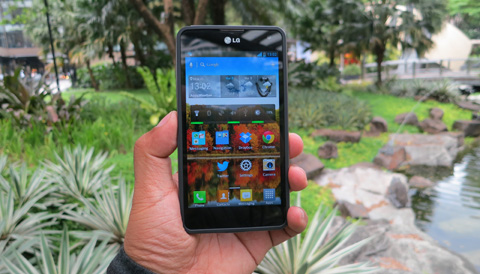
The simple yet elegant design, the solid construction and materials used, powerful hardware is worthy of it being a flagship device. The LTE connectivity is what really separates it form many other handsets that have been released in the local market.
Where we think the shortcoming lies is the timing — it was announced way back in August 2012 with limited release in November and only reached the Philippines this March. That’s about 6 months from announcement to actual release in the country. Within that span of time, the Optimus G Pro has already been announced with a much better offer. Consumers might hold off and wait for the newer model. Then, there’s the Nexus 4 which is similarly spec’ed and will definitely have a lower retail price compared to the Optimus G.
LG Optimus G (E975) specs:
4.7-inch True HD 720p IPS display @ 1280×768 pixels, 318ppi
Corning Gorilla Glass
Qualcomm APQ8064 Snapdragon S4 Pro 1.5GHz quad-core
Adreno 320 GPU
2GB RAM
32GB internal storage
HSPA+ & LTE 100Mbps
NFC
Bluetooth 4.0 w/ A2DP
WiFi 802.11 b/g/n, dual-band, WiFi Direct, DLNA
13MP rear camera, LED flash
1080p video recording @ 30fps
1.3MP front-facing camera
720p video recording @ 30fps
GPS w/ AGPS support, GLONASS
TV-out (via MHL A/V link)
Jellybean 4.1.2
2100mah Li-Po battery
131.9 x 68.9 x 8.5mm (dimensions)
145grams (weight)
The LG Optimus G has a suggested retail price of Php26,990 and is now available in stores nationwide.
What we liked about it:
* Great design and build
* Very fast performance
* Good battery life
* Large internal storage
* Very fast LTE
* Support for Miracast
What we didn’t like about it:
* No expandable microSD card
Disclosure: LG gave this unit to me as honorarium for being one of the 3 expert speakers invited for the official launch of the Optimus G in the Philippines last March 6. – Yuga
The post LG Optimus G Review appeared first on YugaTech | Philippines, Tech News & Reviews.








